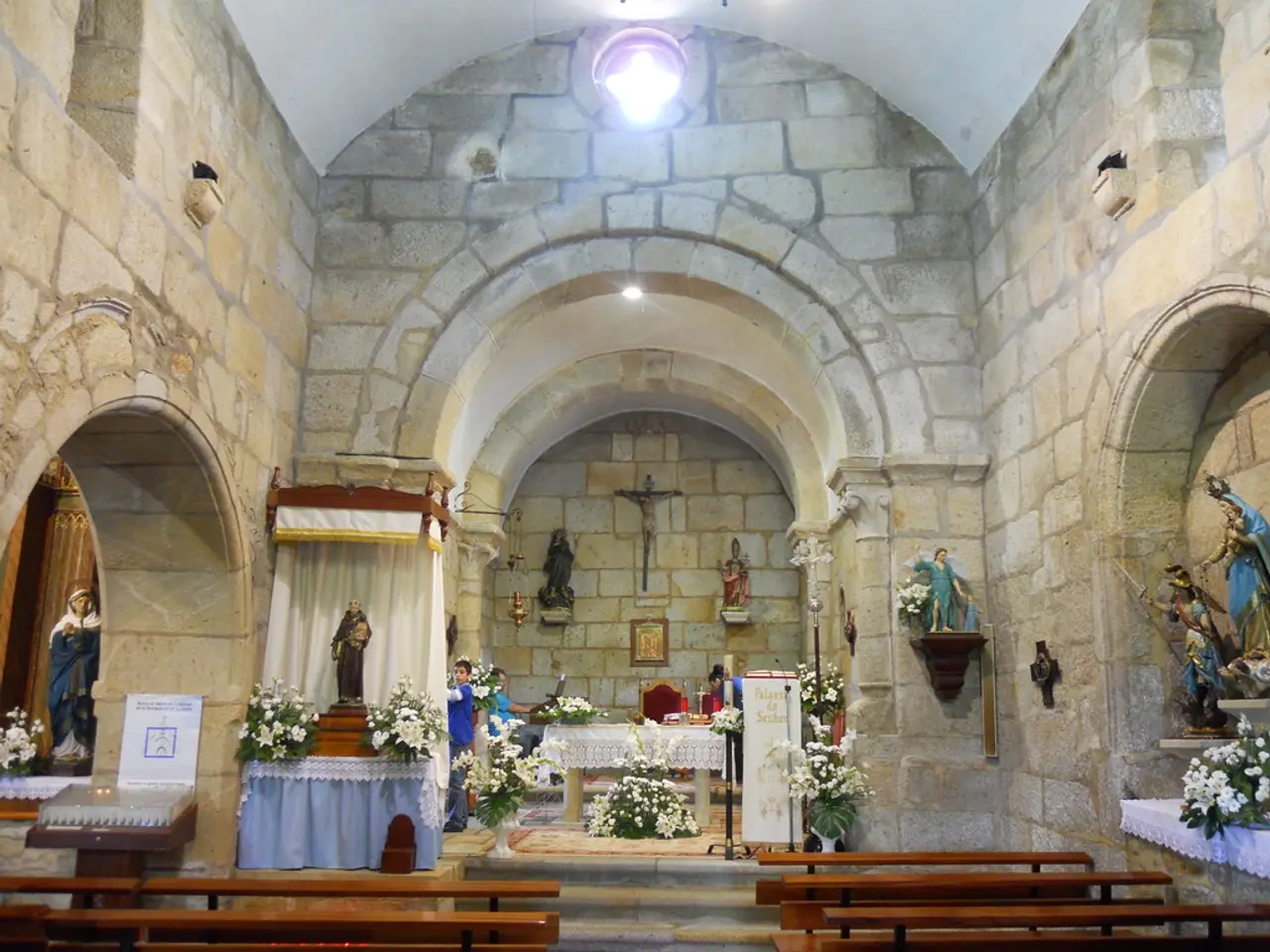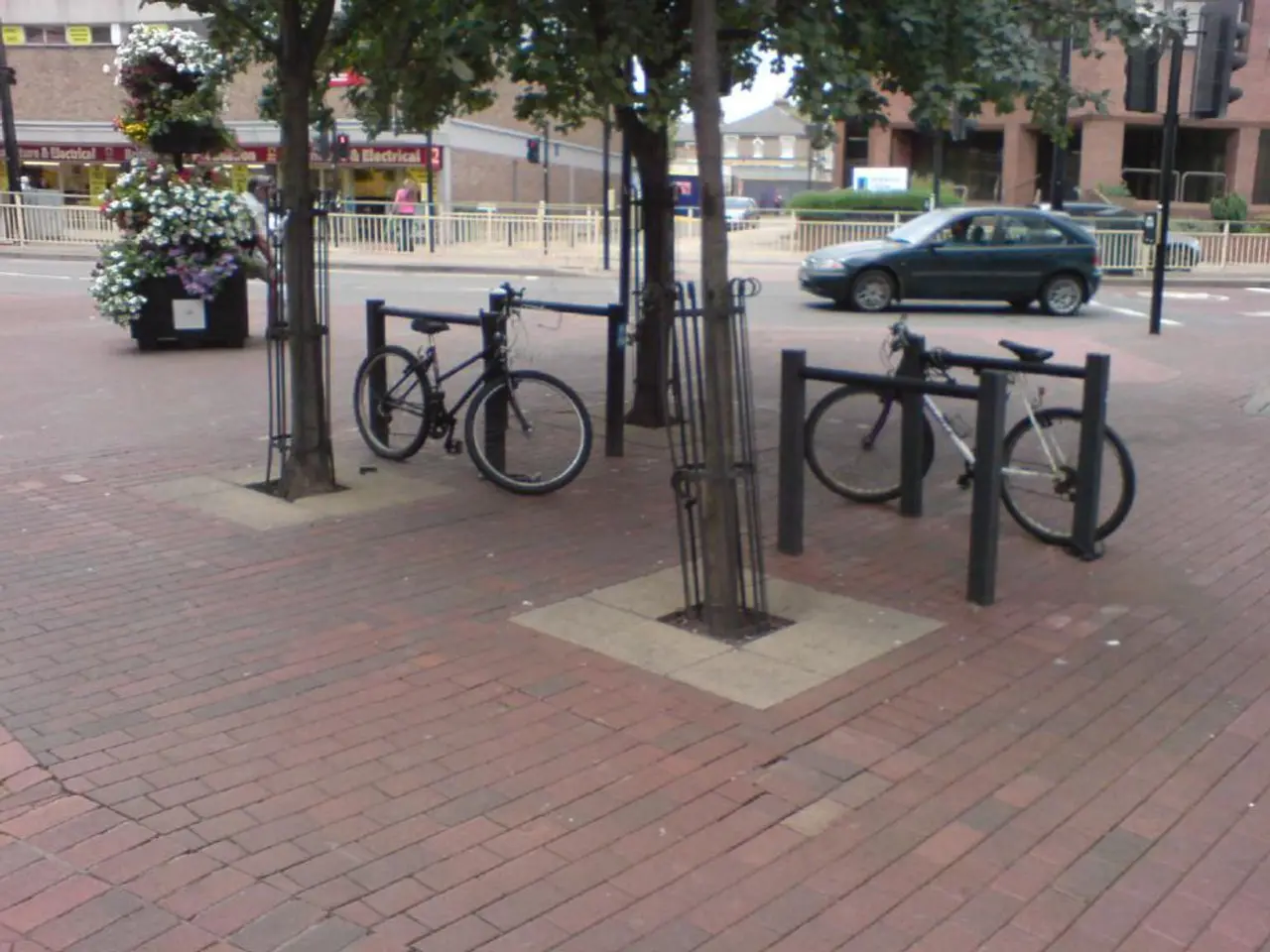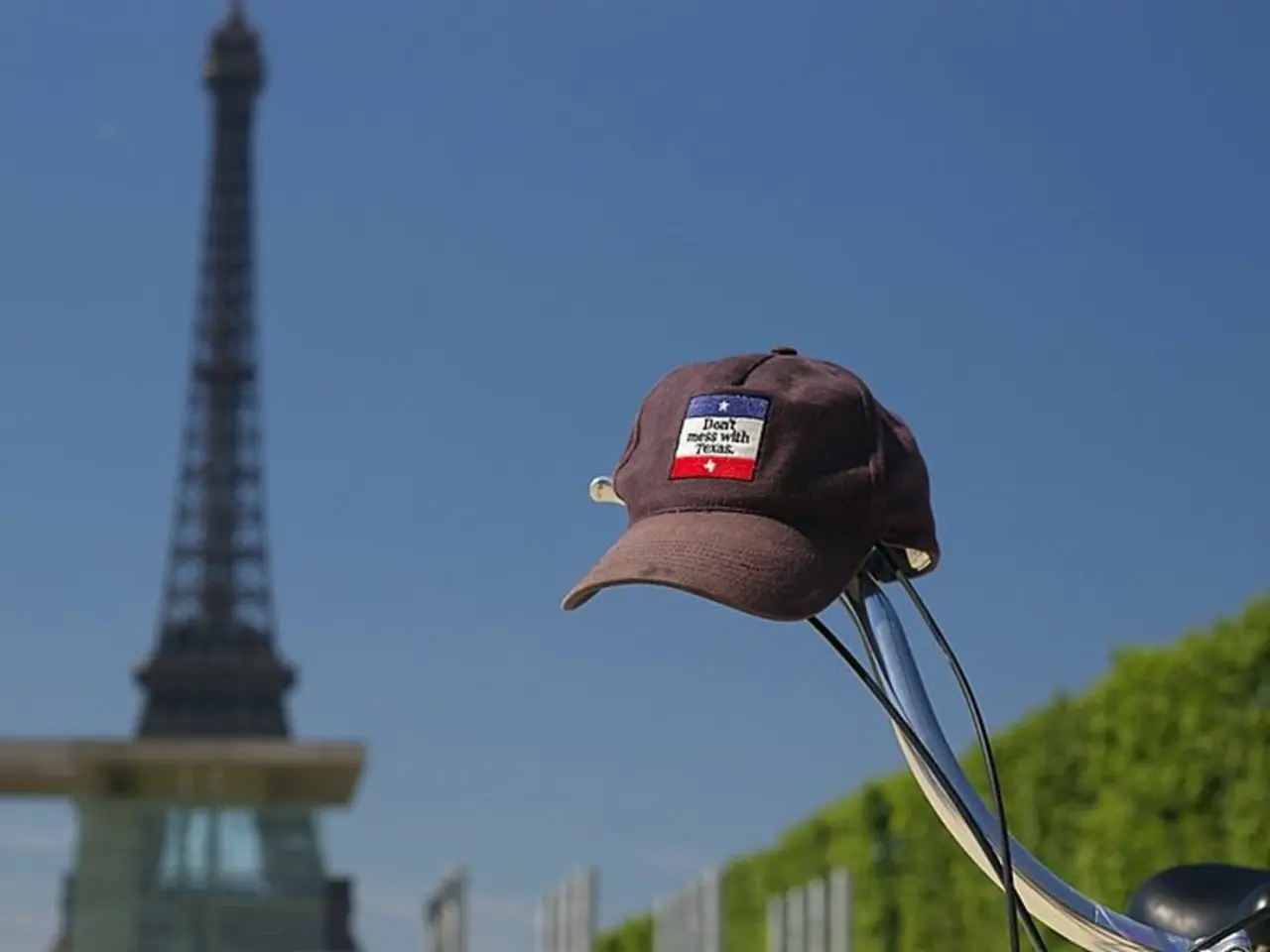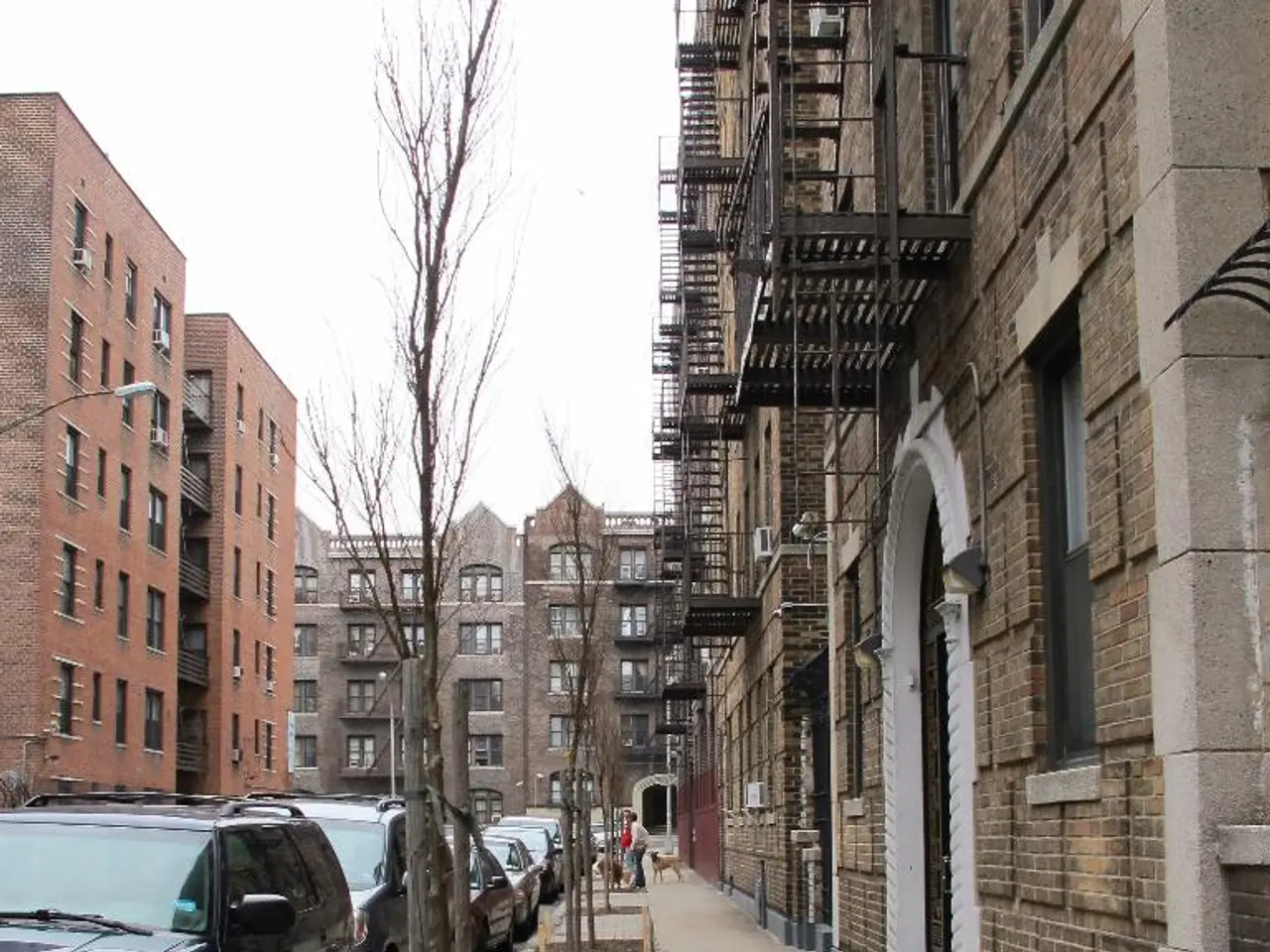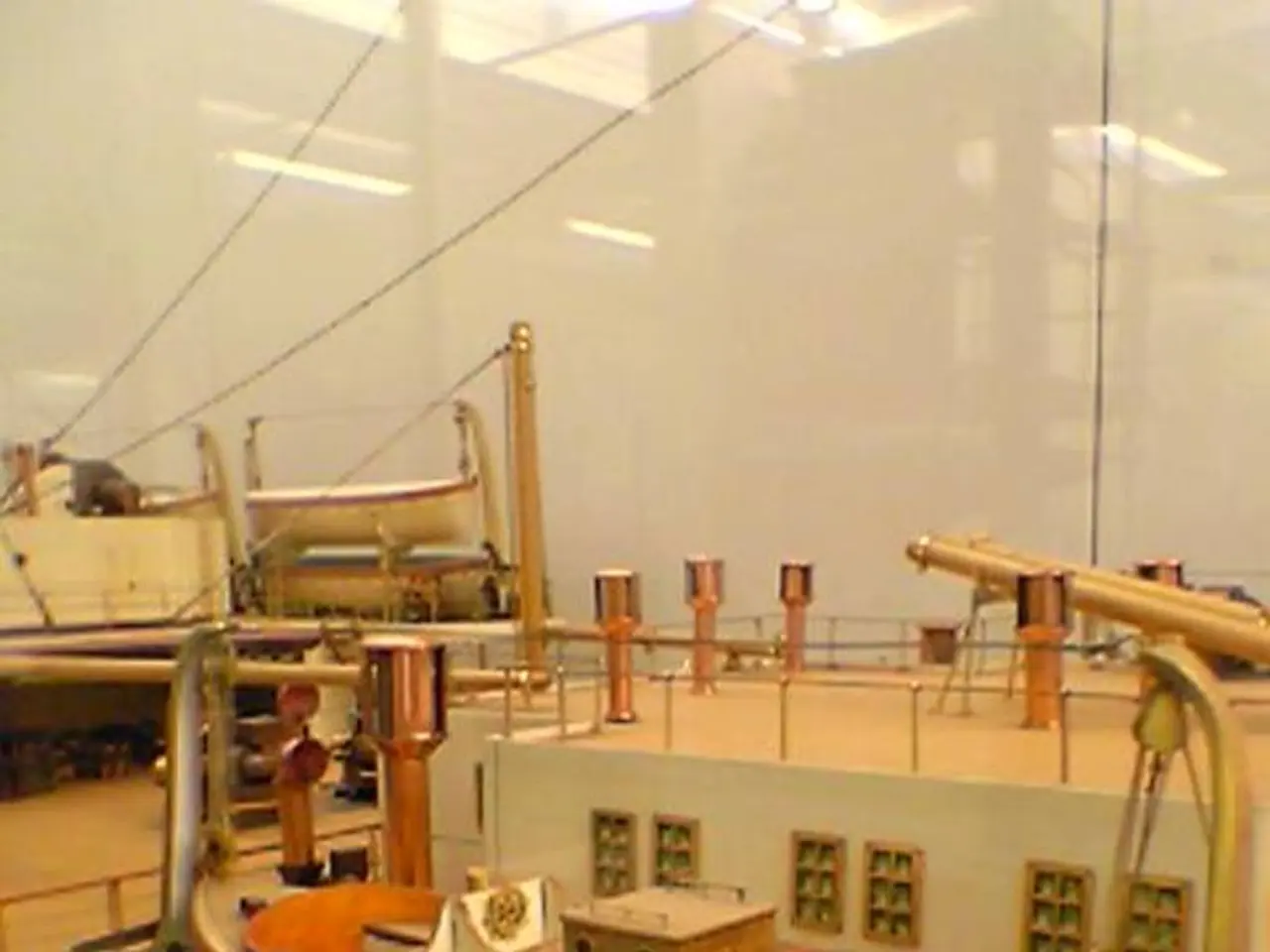Diverse Entities, Encompassing:
In the heart of Gerresheim, a small town in North Rhine-Westphalia, archaeologists have made an intriguing discovery - the remains of a tannery dating back to the early 19th century. The tannery, located near Basilica St. Margareta and Quadenhof, was a significant part of the town's economic landscape during a time of transition from a rural, self-sufficient economy to a more commercial one.
At the beginning of the 19th century, Gerresheim was part of a largely rural economy, typical of the German regions before industrialization took root. The tannery near Basilica St. Margareta would have operated within a pre-industrial craft and artisanal economy, likely serving local agricultural and consumer needs. This economic development was slow and uneven, reflecting the conditions of Germany at that time, which was not yet industrialized and was fragmented into many small principalities with feudal restrictions still influencing production and trade.
The former property owner of the tannery was Caspar Körfgen von Gerresheim, who was listed as a "red tanner" or "lohgerber" in the official address book for Rhineland-Westphalia from 1833. The leather production process involved cleaning animal hides on a scraping beam and tanning them in earthen containers called loh pits, where hides remained for up to a year and a half in tannin. The tannery processing of meat would have caused an intense odor, which is hard to imagine near a church today.
The discovery of the tannery was a surprise to urban planners, and initially, archaeologists doubted their interpretation due to the proximity of the tannery to a church. However, further investigation revealed that the loh pits from the tannery are archaeologically visible today at the Alter Markt in Gerresheim. Large vats from the loh pits are still visible, offering a tangible connection to the town's past.
The archaeological documentation and its later scientific evaluation will provide exciting glimpses into the economic history of Gerresheim at the beginning of the 19th century. The LVR Office for Monument Protection in the Rhineland will participate in the scientific investigation of the tannery finds. The further handling of the tannery finds and the scientific methods for their investigation will be determined during the excavation.
The discovery of this tannery not only offers insights into Gerresheim's economic history but also highlights the transition from a small, labor-intensive, and manual tanning process to larger industrial tanneries using mechanized techniques that emerged later with the broader regional industrialization of North Rhine-Westphalia. This discovery serves as a reminder of the town's rich history and its role in the broader economic development of the region.
In the context of Gerresheim's transformation from a rural, self-sufficient economy towards commercialization, the tannery near Basilica St. Margareta can be linked to the manufacturing industry, as it was a crucial part of the pre-industrial, craft-based economy. The tannery's presence demonstrates an early phase of financial integration, as Caspar Körfgen von Gerresheim, the owner, was engaged in the trade of leathers produced from animal hides, which had both local and consumer market value.
